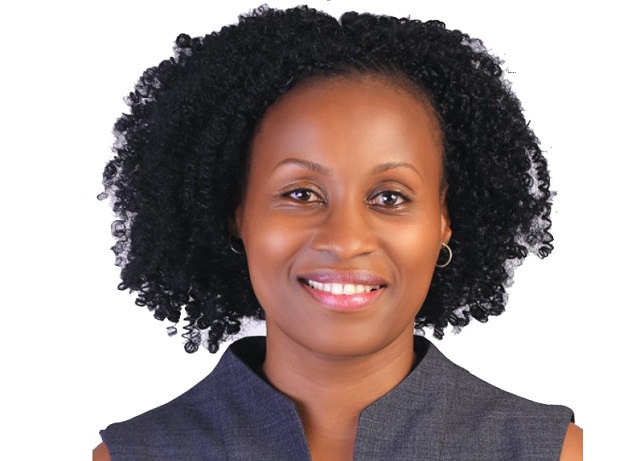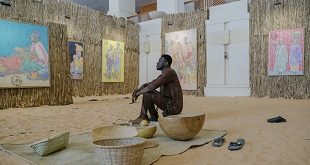
What Uganda has got wrong – and right
In June, President Yoweri Museveni tightened restrictions in the country following a worrying rise in COVID-19 infections and deaths. The new stringent measures included a 42-day lockdown and restrictions on the movement of people. Public health specialist Gloria Seruwagi reveals some of the critical success factors and issues that the government is missing in its response strategy.
How is Uganda coping?
Not well, I am afraid. Our health system is quite fragile and was never built for large scale or prolonged critical care. There have been pockets of success building the resilience of the health system, but efforts are generally fragmented and rarely consolidated.
So the country’s health system has been stretched thin and is unable to cope with the surge in cases. It doesn’t have enough supplies, especially of oxygen and beds for critically ill patients. The COVID-19 response is also not as decentralised as it should be.
The private sector has stepped in to support. But it’s expensive and many families can’t afford it. Development partners and civil society are also trying to support, but scope is limited.
Without safe or effective treatment options, people are self-medicating and using herbal remedies or home-made concoctions. There are also a lot of unreported cases.
Most Ugandans feel trapped. The second lockdown essentially means that people cannot rely on the other support systems and social networks that would have helped them cope in the absence of accessible, responsive and affordable healthcare.
What is your biggest concern?
The unmet need for mental health and psychosocial support. Secondly, a relatively unhealthy obsession with biomedical science in addressing the pandemic at the expense of other disciplines. Here I’m mostly thinking about community-leaning disciplines. For example, social workers have expertise in counseling, deep roots in communities and a country-wide network. But they remain largely locked down and don’t make the cut as “essential workers” allowed to provide services. We don’t see many psychologists or psychotherapists in the mainstream response space. Music, dance and drama are low cost and can be used to educate, model behaviour, entertain and also calm down a very distressed population. And we still haven’t leveraged information and communication technology for behavioural change, which is a missed opportunity, especially with high mobile phone ownership and social media use.
Health teams in villages have community access but generally lack essential skills in counseling or mental health services. Now would be a good time to equip them. These are low cost interventions, sometimes no cost, that you don’t hear policymakers considering as the focus is on procurement of vaccines, oxygen and all the hardware of healthcare. Those are important and rank high for obvious reasons. But Uganda needs to balance the clinical side with other contributors to population well-being, especially when it can’t afford to provide critical healthcare for all and vaccine coverage is at an all-time low.
The largely top-down approach of the national response hasn’t effectively used structures at the local level which would help the government to cope with critical and clinical cases. I know that the national response has a “community engagement” pillar. But it remains unclear exactly how this is happening; it sounds more like rhetoric than action.
Finally, I am concerned with the effect on the continuity of services, especially health services related to maternal and child health, sexual and reproductive health, HIV and noncommunicable diseases. A laser focus on COVID-19 is negatively affecting the delivery of care for other conditions and attending to other pressing matters. And, of course, occupational risks for health workers.
What’s not working?
Our containment strategy wasn’t that airtight. Schools were reopened and then closed with accumulating cases. By the time lockdown came, a lot of mixing, infection and community transmissions had happened and continued to spread with the movement. We failed here and were unprepared to handle the consequences.
The approach to enforcement, in some cases, is less than ideal and even counterproductive. Community anger has flared, widening the gap between people and their government. We allowed a breakdown in social capital and public trust, leading to very negative perceptions of public policy. Also, with a lack of clear guidance and information, stigma has increased, sometimes to extreme levels. Examples include a body being dumped on the roadside or isolating family members. People are in survival mode and acting desperate.
COVID-related research was commissioned during the first wave and some of it was government-funded, which is great. We’ve had rapid dissemination but uptake remains low, so the longstanding battle between evidence and politics remains. Researcher-public engagement has also not been optimal.
What’s working?
Public risk perception is high, and adherence to guidelines has significantly increased. We needed this right from the start but back then people didn’t believe COVID-19 was real, and our recently concluded political season didn’t help much. Extensive COVID-19 case profiling has helped a lot and many families have now been directly affected.
Despite limited bed capacity and other shortages, like oxygen, the few patients who get into care receive quality services and survival rates are high. The skill and capacity to handle these cases is excellent. But this is only for a few. So while it’s a success factor it’s also a problem. Uganda’s higher level health facilities have strong capacity, but can only handle limited critical caseloads. Lower-level facilities haven’t decongested hospitals and cannot handle critical cases. They lack on many fronts, including human resources, skills and supplies.
What should be done?
Alongside other very important and urgent issues on the policy radar, we need to activate the community engagement strategy and multi-level COVID-19 taskforces and decentralise some aspects of the response. Make the community partners. Build capacity for surveillance and case management at all levels. I think home-based care now needs to be widely promoted, with clear and sufficient guidance. It was integral to Uganda’s HIV success story, as was political and other (religious, cultural) leadership.
Policymakers must use research recommendations and listen to practitioners at the frontlines. In addition, they must address the infodemic and give people factual, enabling information.
It’s vital that the government provide civilians with continuous updates. The president’s leadership in the first wave was great, updating, explaining and giving people guidance on what could come next. Many people listened and felt leadership was being accountable. This central platform could continue, with other actors (technical, civil society, sociocultural) being swapped to talk about issues.
Finally we must focus on national cohesion. Public support needs to be mobilised as Uganda deals with issues outside its control – like vaccine manufacturers making Uganda, among other countries, wait in a long queue. We need to have honest conversations on national health inequalities and disadvantage as well as how we attain healthcare for all. We need to learn lessons on how to balance an effective national pandemic response with preparing our different systems to better absorb unprecedented shocks.
****
Gloria Seruwagi previously received COVID-research funding from the Government of Uganda through Makerere University Research and Innovations Fund (MakRIF) and Elrha/R2HC (Research for Health in Humanitarian Crises).
Source:theconversation
 The Independent Uganda: You get the Truth we Pay the Price
The Independent Uganda: You get the Truth we Pay the Price

